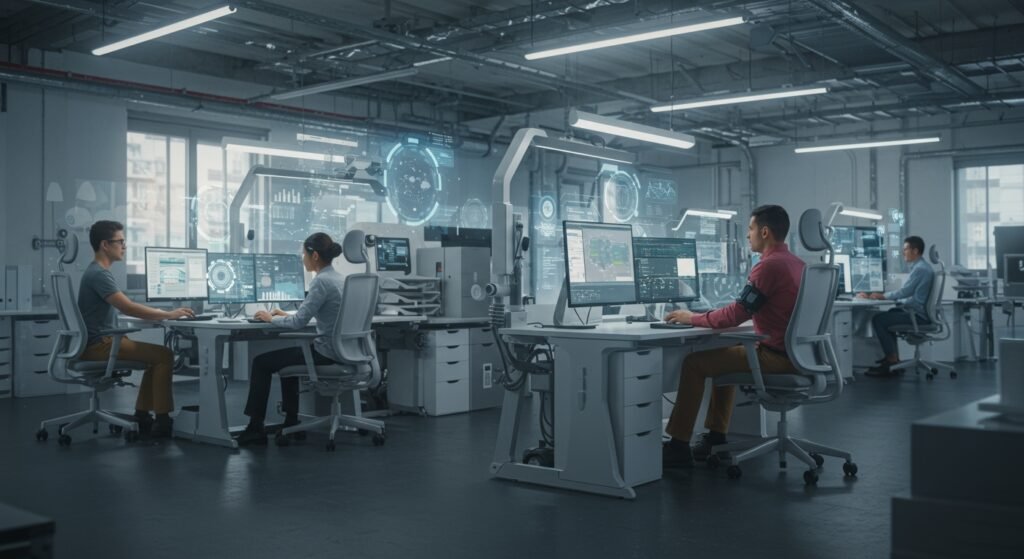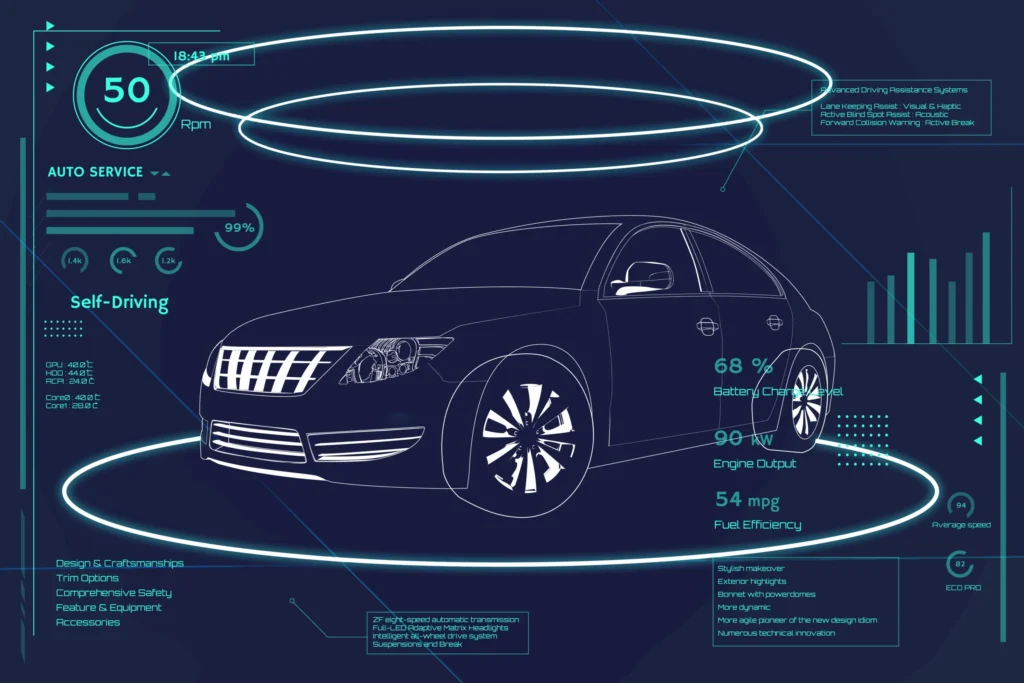New Frontiers in Ergonomics: Revolutionizing Workplaces for Optimal Performance
The concept of ergonomics, the science of designing the workplace to fit the worker, has been steadily evolving. However, we are now entering exciting New Frontiers in Ergonomics, where technological advancements, deeper understanding of human factors, and a focus on sustainability are transforming how we interact with our environments. This comprehensive guide explores these cutting-edge developments, offering insights into the future of comfortable, efficient, and healthy work.
Table of Contents
- Introduction: Shaping the Future of Work
- AI and Machine Learning in Ergonomics
- Wearable Technology and Biometric Feedback
- Sustainable and Circular Ergonomic Design
- Cognitive Ergonomics in the Digital Age
- The Role of Industrial Engineering in Ergonomics
- Future Trends and Challenges
- Conclusion: A Brighter, Healthier Future
Introduction: Shaping the Future of Work
As workplaces become increasingly dynamic, driven by automation, remote work, and a heightened awareness of employee well-being, the scope of ergonomics has expanded far beyond adjustable chairs and keyboard trays. The next generation of ergonomic solutions integrates smart technology, data analytics, and a holistic view of human performance, pushing the boundaries of what’s possible in workplace design.
AI and Machine Learning in Ergonomics
One of the most exciting New Frontiers in Ergonomics lies in the application of Artificial Intelligence and Machine Learning. These technologies are enabling personalized, predictive, and proactive ergonomic interventions. AI algorithms can analyze vast datasets of biometric information, movement patterns, and workplace conditions to identify potential risks and recommend tailored solutions.
Predictive Analytics for Injury Prevention
AI-driven predictive analytics can forecast musculoskeletal disorders (MSDs) before they manifest. By analyzing data from sensors, wearable devices, and even video feeds, AI can detect subtle deviations in posture or repetitive motions that indicate a high risk of injury. This allows for timely intervention, such as adjusting workstation setups or recommending specific stretches, significantly reducing workplace injuries and associated costs.
Personalized Ergonomic Solutions
Gone are the days of one-size-fits-all ergonomic solutions. Machine learning algorithms can create highly personalized ergonomic profiles for individual workers, adapting equipment, lighting, and even ambient temperatures to their unique needs and preferences. This level of customization leads to unparalleled comfort, productivity, and reduced strain.
Wearable Technology and Biometric Feedback
Wearable devices, from smartwatches to specialized sensors embedded in clothing, are revolutionizing real-time ergonomic assessment. These devices provide immediate feedback on posture, movement, heart rate, and even stress levels. This data empowers individuals to make instant adjustments to their work habits and environments, fostering a culture of self-awareness and proactive health management. For more information on workplace safety standards, you can visit the Occupational Safety and Health Administration (OSHA) website, an invaluable resource for employers and employees alike. Visit OSHA.
Sustainable and Circular Ergonomic Design
The future of ergonomics also embraces environmental responsibility. Sustainable ergonomic design focuses on using eco-friendly materials, minimizing waste through circular economy principles, and designing products that are durable, repairable, and recyclable. This approach not only benefits the planet but also often leads to more robust and higher-quality ergonomic products. Manufacturers are increasingly integrating life-cycle assessments into their design processes to ensure their products have a minimal ecological footprint.
Cognitive Ergonomics in the Digital Age
As digital interfaces become omnipresent, cognitive ergonomics—the study of how technology design impacts mental processes—is more critical than ever. This frontier explores how to optimize software interfaces, information presentation, and workflow design to reduce mental fatigue, improve decision-making, and enhance overall cognitive well-being. This includes managing notification overload, designing intuitive user experiences, and optimizing screen time for diverse tasks. To understand the foundational principles that these innovations build upon, consider reading our detailed guide on Understanding Workplace Ergonomics Basics.
The Role of Industrial Engineering in Ergonomics
Industrial engineering plays a pivotal role in these new frontiers by providing the systematic approaches and analytical tools necessary to implement ergonomic solutions at scale. Industrial engineers optimize processes, design efficient layouts, and integrate technology to create holistic systems where human capabilities are maximized and risks are minimized. Their expertise in process flow, human-machine interaction, and system optimization is crucial for translating ergonomic theory into practical, impactful workplace improvements, especially as new technologies and work methods emerge.
Comparison: Traditional vs. Modern Ergonomics
| Feature | Traditional Ergonomics | New Frontiers in Ergonomics |
|---|---|---|
| Focus | Static design, Posture adjustment | Dynamic, Holistic well-being (physical & cognitive) |
| Tools | Manual measurement, Observation | AI, Wearables, Biometric sensors |
| Approach | Reactive, General solutions | Proactive, Personalized, Predictive |
| Scope | Physical workstation | Entire work ecosystem, mental load |
| Sustainability | Limited consideration | Core design principle |
Future Trends and Challenges
Looking ahead, we can expect further integration of virtual reality (VR) and augmented reality (AR) for ergonomic training and workplace simulation, allowing designers to test solutions virtually before physical implementation. The rise of cobots (collaborative robots) will also necessitate new ergonomic considerations for safe and efficient human-robot interaction. However, challenges remain, including data privacy concerns, the cost of implementing advanced technologies, and the need for continuous education as these trends evolve. Adapting to these changes will define the success of future ergonomic initiatives.
Conclusion: A Brighter, Healthier Future
The New Frontiers in Ergonomics are not just about improving physical comfort; they are about fostering a comprehensive environment that promotes health, boosts productivity, and enhances overall quality of life for workers. By embracing AI, wearable tech, sustainable design, and cognitive considerations, alongside the foundational principles of industrial engineering, we are building workplaces that are smarter, safer, and inherently more human-centric. The future of work is not just about what we do, but how we do it – comfortably, efficiently, and sustainably.


